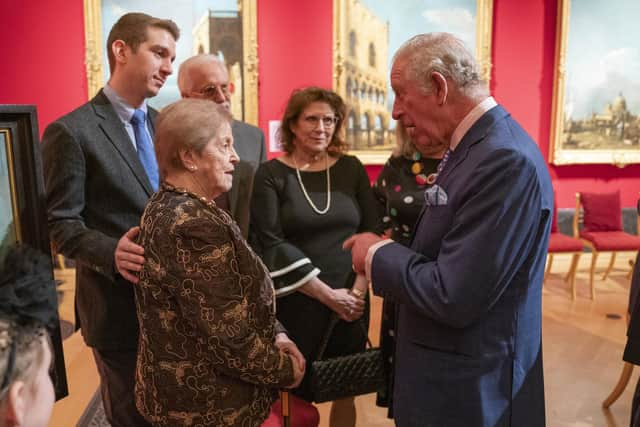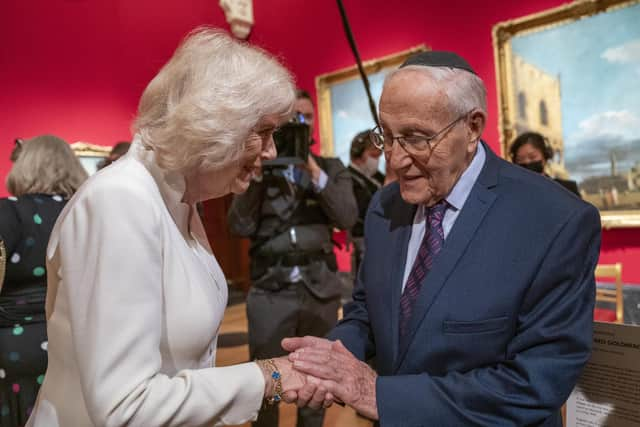Seven holocaust survivors feature in paintings commissioned by Prince Charles
Charles commissioned the paintings of the elderly men and women to stand as a lasting reminder of the horrors of the Nazi regime, and was left moved after meeting one sitter who showed the prince her concentration camp tattoo.
Auschwitz survivor Lily Ebert, 98, whose picture was unveiled with six others at the Queen’s Gallery in London, also showed the heir to the throne a golden pendant she hid from camp guards in her shoe then later in her daily bread ration.In the foreword for a catalogue accompanying the exhibition, Charles wrote we are all “responsible for one another, for our collective history”.
Advertisement
Hide AdAdvertisement
Hide AdHe said:“Seven portraits, seven faces. Each a survivor of the horrors of those years, who sought refuge and a home in Britain after the war, becoming an integral part of the fabric of our nation."


The 98-year-old Mrs Ebert showed the future king her pendant and rolled up the sleeve of her jacket to reveal the tattoo on her left forearm A-10572 – A for Auschwitz, ten her block number and 572 her prisoner number.
In July 1944, a 20-year-old Mrs Ebert and her family – mother and five siblings – were transported to Auschwitz. Her parent and some of her siblings were condemned to death in the gas chamber after encountering the infamous Josef Mengele, notorious for his experiments on those in the camp.
Speaking about her pendant in the shape of angel, she said: “This necklace is very special. It went through Auschwitz and survived with me. Auschwitz took everything, even the golden teeth they took off people. But this survived.”
The prince called on the talents of seven acclaimed artists involved to take part in the year-long project: Paul Benney, Ishbel Myerscough, Clara Drummond, Massimiliano Pironti, Peter Kuhfeld, Stuart Pearson Wright and Jenny Saville.


The project is the subject of a 60-minute BBC Two documentary, Survivors: Portraits of the Holocaust, which will be screened today to mark Holocaust Memorial Day.
The programme will air after a new group was established to promote the "living legacy" of a Scot who gave her life to protect Jewish school girls during the Holocaust.
The Jane Haining Project was formed by a cohort of Christian and Jewish people who believe her story is relevant today in light of growing levels of anti-Semitism, racism, and intolerance.
Advertisement
Hide AdAdvertisement
Hide AdPlans to launch a national essay writing competition in Scottish secondary schools and a digital heritage trail app of notable places connected to the Church of Scotland missionary who died in Auschwitz and the Jewish community are in the pipeline.
Miss Haining was the matron at the Scottish Mission School in Budapest, Hungary and refused to abandon “her girls” after the Second World War broke out in 1939 even though she knew her life was in danger.
She was taken to Auschwitz in Nazi-occupied Poland where she died at the age of 47.